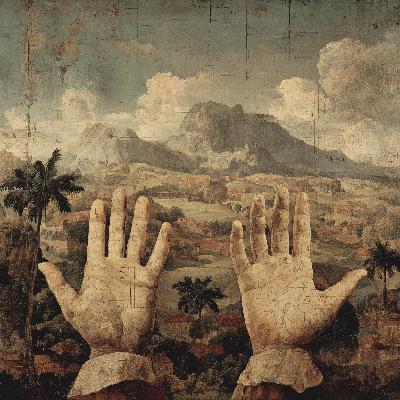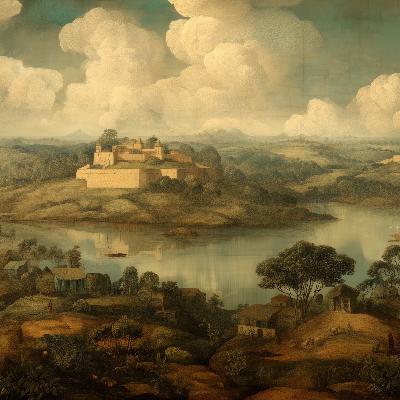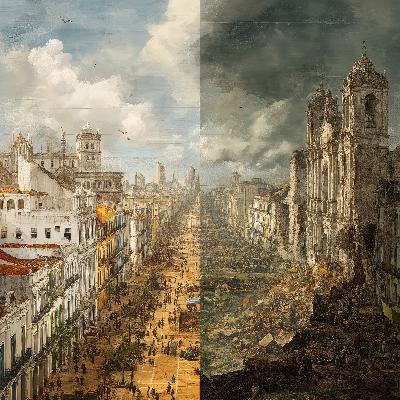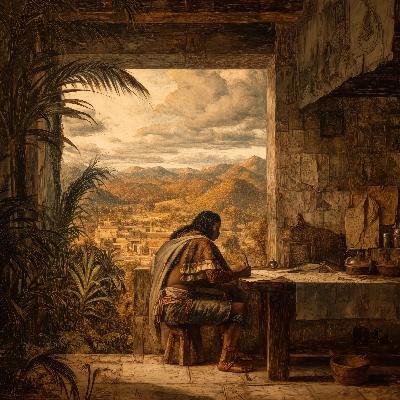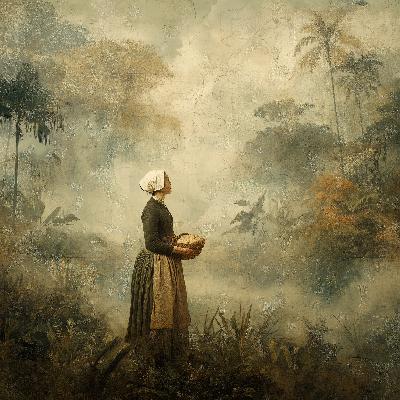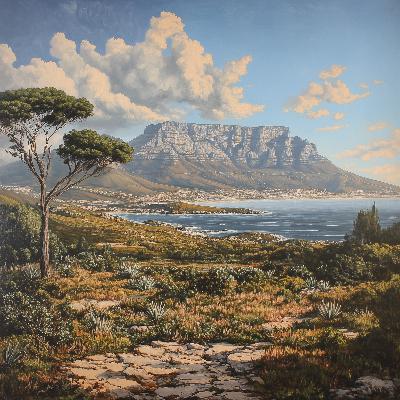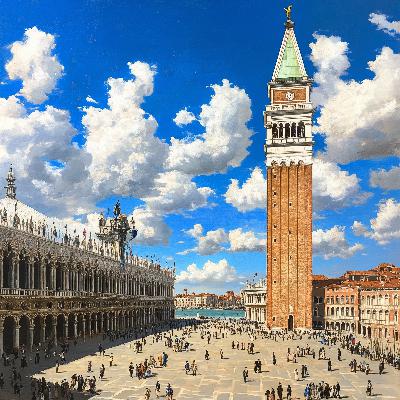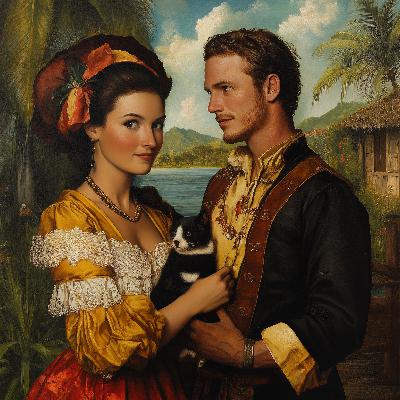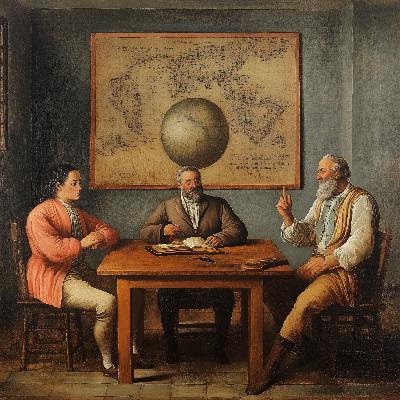Discover Viewpoints – Placecloud (English)
Viewpoints – Placecloud (English)

Viewpoints – Placecloud (English)
Author: Placecloud (English)
Subscribed: 0Played: 1Subscribe
Share
Copyright © PLACECLOUD, all rights reserved.
Description
Leading cultural researchers tell stories of places around the world. For the full spatial multimedia experience and more episodes visit www.placecloud.io.
507 Episodes
Reverse
Fortaleza Brazil The Brazilian state of Ceará is one of the poorer regions of Brazil. The GDP per capita is just a third of that of the people in the state of Sao Paulo, and not even a fifth of those in the district around the capital of Brasilia.
Vera Cruz Brazil Standing on Itaparica Island today, with the sea breeze brushing past the ramparts of the old fort of São Lourenço, it’s easy to be lulled by the slow rhythms of Bahia. But beneath these waters and stones lies a deeper, darker current; one that stretches back to a fleeting empire built on commerce, ambition, and blood.
The Hague The Netherlands You are standing in the Binnenhof, the heart of the Dutch Republic. Imagine this is the winter of 1642; narrow windows filter the pale northern light into the vaulted chambers. Stone floors echo with quiet footsteps. The thick oak doors are shut, but beyond them, the States-General is in session, a body of burghers, regents, and envoys who hold the fate of an empire in their hands.
Amsterdam The Netherlands It was the spring of 1642, and the corridors of the Dutch West India Company headquarters were quiet, dimly lit by daylight slanting through small windows, the air heavy with the scent of parchment and pipe smoke. Behind closed doors, a handful of directors, merchants, not monarchs, reviewed ledgers and letters from the tropics. Among them, one decision had begun to crystallize. It would not be announced with trumpets. There would be no open confrontation. But it would collapse a court across the ocean.
Teot nio Vilela Brazil Stand on the windswept grounds of Fort Maurits today, near the banks of the São Francisco River in northeastern Brazil, and it’s hard to imagine the colonial drama that once unfolded here, where cannon fire echoed across the mangroves and Dutch banners flew over newly conquered land. This was not only a frontier of empire, but also the outer edge of a conflict that would shake the very foundations of colonial governance in Dutch Brazil.
Jaboat o dos Guararapes Brazil We are at Praça do Córrego da Batalha, in the municipality of Jaboatão dos Guararapes. A córrego is a brook, or stream. The square marks the beginning of an avenue also called Córrego da Batalha, as well as the ascent to the Guararapes Hills. Everything in the surrounding area seems to reference the Dutch period in Pernambuco, lasting from 1630 to 1654, more specifically, to the two conflicts between the Dutch and the Portuguese known as the Battles of Guararapes, fought in April 1648 and February 1649.
Cidade Velha Cabo Verde We’re at the pelourinho in Cidade Velha, in the south of the island of Santiago, in Cape Verde. The historic centre of Cidade Velha is a UNESCO World Heritage Site. The town of Ribeira Grande, renamed Cidade Velha, ‘Old Town’, in the late 18th century, was the first European colonial outpost in the tropics. The town features some of the original street layout and impressive remains, including two churches, a royal fortress and this Pillory Square with its ornate 16th century marble pillar.
Livorno Italy We’re standing in front of the new synagogue of Livorno. It was completed in 1962, just around the corner from where the old synagogue used to stand, which was destroyed during World War 2. That synagogue was originally built in 1607, when it became the central place of worship for the Sephardic jewish community in Livorno.
Bergen The Netherlands We’re at the former offices of the Noorderkwartier, one of the chambers of the Dutch West India Company, in Hoorn. In the 17th century, its officers were swayed by anonymous pamphlets attempting to influence policy on trade with Brazil.
Pedro R gis Brazil It's true that the Paraíba coast is one of the most popular destinations for tourism in Brazil. There are many beautiful beaches along the coast of Paraíba, one of which is where we are now, the beach called Baía da Traição. Today, the warm sea and long stretch of sand guarantee a calm and paradisiacal setting, very different from what we would have found in 1645, when the war to expel the Dutch from Brazil began. What links this particular beach to the Dutch period, which ran from 1630 to 1654, is an illustrious character from this peaceful region of the northeastern coast, whose original peoples were, of course, indigenous.
We are on the banks of the Xingu River, in the heart of the Brazilian Amazon.
When we think of the Dutch occupation of Brazil in the 17th century, we usually think of the Brazilian north-east, where the invaders financed by the Dutch West India Company stayed for 24 years, but they also came to occupy territories in the north, deep into the rainforest.
Recife Brazil We stand here before the statue of the goddess Athena, or, if you’re more Roman inclined, Minerva, at the head of the Maurício de Nassau Bridge, in Recife. The goddess of wisdom, the arts, and strategy arrived here in 1917 as part of a major urban reform. Recife wanted to present itself as a modern capital, and to do so, it looked to Europe for inspiration. The governor at the time, José Rufino Bezerra Cavalcanti, ordered four allegorical sculptures to be imported from the Val d’Osne foundry in Paris. Today, they adorn the ends of this bridge.
The Hague The Netherlands The German John Maurice de Nassau-Siegen enlisted in the Dutch army at the tender age of 16. Though from a respectable family with royal connections, his father had spent most of his resources supporting the Dutch independence war against Spain, which meant that for John, his father’s 13th child, there was little left to go around.
Middelburg The Netherlands We’re in the town of Middelburg, at the location of the West India house, once the home of the offices of the Zeeland chamber of the Dutch West India Company. The current building houses a fancy stroopwafel store.
Cape Town South Africa The term ‘polymath’ dates back to at least 1603, when it was first used in the title of a published work, by the German Johann van Wowern. He defined polymathy as "knowledge of various matters, drawn from all kinds of studies ... ranging freely through all the fields of the disciplines, as far as the human mind, with unwearied industry, is able to pursue them".
Venice Italy 17th century Europeans, specifically the capitalist elite, were recognizably cosmopolitan. They moved between countries, had commercial fingers in international pies, and exploited the imperial periphery for the good of their people, but mostly for the good of themselves.
Kranenburg Germany We’re standing in front of the tomb of John Maurice de Nassau-Siegen. We’re in the village of Hau, on the border of Kleve, and just a few kilometers away from the border with the Netherlands.
John Maurice de Nassau’s life story is not quite one from rags to riches, but it’s certainly one from an origin of relative obscurity, to a grand finale of hobnobbing with Europe’s kings and queens.
Kranenburg Germany This lovely wooded area here in Kleve, was home to the Prinzenhof, the Prince’s Court. Built for John Maurice de Nassau Siegen in the second half of the 17th century, it was badly damaged during the Second World War, before being demolished, though the associated gardens remain.
Albany United States After the United States declared its independence from the United Kingdom on July 2, 1776, Albany became the capital of the state of New York the next year. The city had already been chartered, given official status as a city, in 1686, making it the oldest city in the state, after it had been named Albany when the English had taken over the colony from the Dutch in 1664.
Jo o Pessoa Brazil We find ourselves in front of the rectory of the Federal University of Paraíba, a public higher education institution in the north-east of Brazil, which will be 70 years old in 2025. From this campus in the capital João Pessoa, young researchers are conducting contemporary studies on an important period in Brazilian history: the Dutch occupation of 17th century Brazil.




